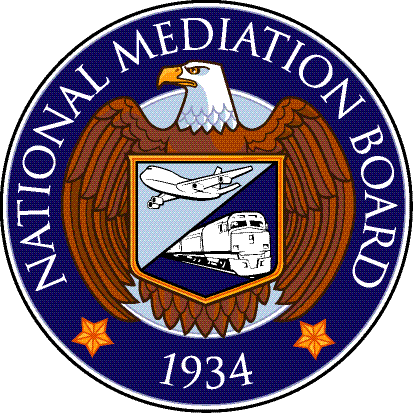List of Presidential Emergency Boards
Rail and Air Carriers
The President may create an emergency board to investigate and report on a dispute over the terms of a collective bargaining agreement. Under the Railway Labor Act, the President may exercise his discretion to create an emergency board when the labor dispute threatens “substantially to interrupt interstate commerce to a degree such as to deprive any section of the country of essential transportation service.”
Creation of an emergency board delays a strike, lockout or other form of self-help, generally for 60 days. The emergency board has 30 days to issue its report. Generally, emergency boards provide recommendations for settlement of the dispute. After the emergency board reports to the President, the parties to the dispute have another 30 day cooling off period to consider the recommendations of the emergency board and to reach an agreement.
If no agreement is reached at the end of the cooling off period, then the parties may engage in self-help, including strikes, lockouts and unilateral changes in terms and conditions of employment.
Commuter Rail Carriers
The post-mediation dispute resolution process for commuter railroads provides for up to two emergency boards and a public hearing.
If no settlement is reached, either party to a dispute, or the Governor of any affected state, may request that the President create an emergency board to report on a dispute over the terms of a collective bargaining agreement.
Creation of an initial emergency board for a commuter railroad dispute delays a strike, lockout or other form of self-help, generally for 60 days. The emergency board has 30 days to issue its report. Generally, emergency boards provide recommendations for settlement of the dispute. After the emergency Board reports to the President, the parties to the dispute have a 60 day cooling off period to consider the recommendations of the emergency board and to reach an agreement.
If no agreement is reached 30 days after the report and recommendations of the first emergency board, then the National Mediation Board is required to hold a public hearing. If no agreement is reached 60 days after the report and recommendations of the first emergency board, then either party to the dispute or the Governor of any affected state, may request that the President create a second emergency board to select among final offers. Final offers are to be submitted to the board within 30 days of its creation. The board has an additional 30 days to select a final offer. After the second emergency board reports to the President, the parties have a final 60 day cooling off period to consider the recommendations of both emergency boards and to reach an agreement.
If no agreement is reached at the end of the final cooling off period, then the parties may engage in self-help, including strikes, lockouts and unilateral changes in terms and conditions of employment.

